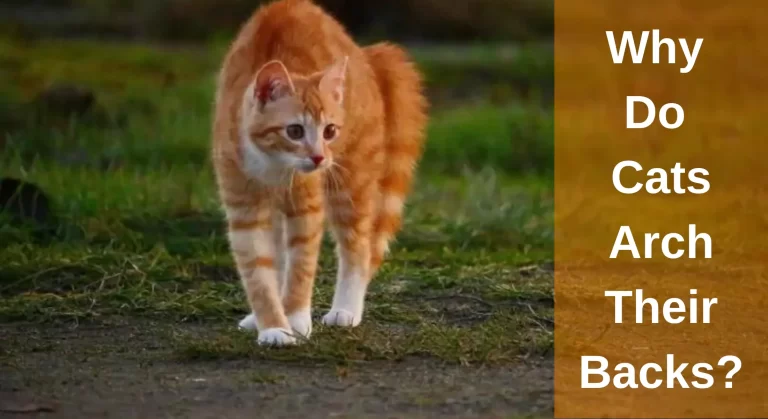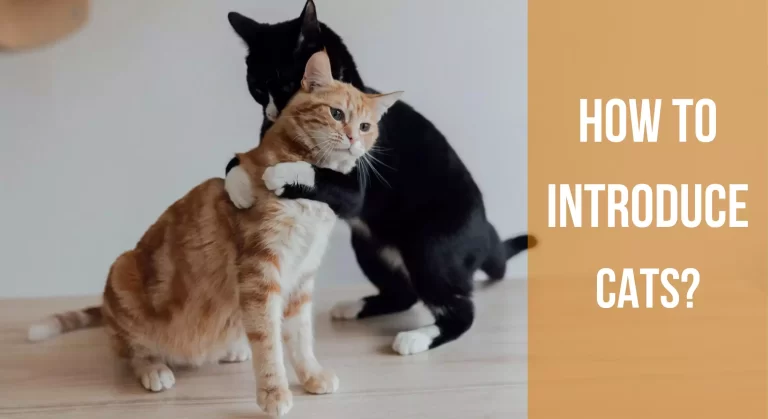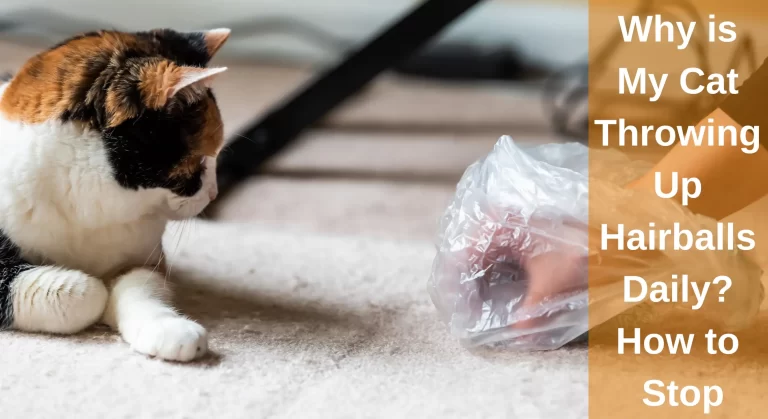How Do Cats Know Where the Litter Box Is?[Answered]
If you’ve ever marveled at your cat’s uncanny ability to find its litter box with pinpoint accuracy, you’re not alone. Cats, with their mysterious and independent nature, seem to possess an innate GPS system that leads them straight to their designated spot for elimination. But have you ever wondered how they manage this impressive feat? How Do Cats Know Where the Litter Box Is?
Cats know where the litter box is through a combination of factors. They rely on their keen sense of smell to recognize the scent associated with the litter box. Observing and imitating other cats or humans using the litter box also plays a role. Additionally, their innate instincts for cleanliness and territorial marking guide them to the designated elimination spot.
In this article, we will unravel the captivating secrets behind a cat’s remarkable navigation skills, delving into their instincts, senses, and perhaps a touch of feline magic that guides them to the sacred litter box.
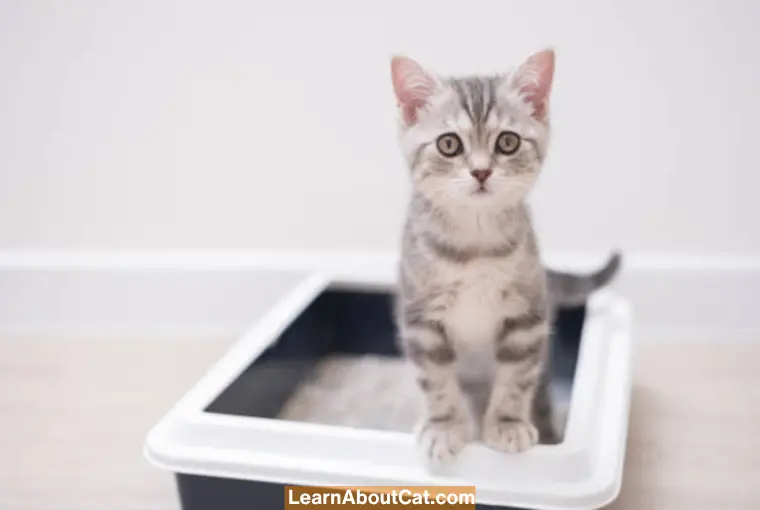
Do Cats Know to Use the Litter Box?
Yes, cats have a natural instinct to use the litter box. From a young age, mother cats teach their kittens to bury their waste, and this behavior becomes ingrained in their instincts.
When kittens are still with their mother, she provides them with a safe area to eliminate, usually in a shallow, sandy spot. As they grow, they learn to associate the texture and smell of the litter with the appropriate place to go potty.
Also Read: Can Cats Find Their Litter Box If You Move It?
How Do Cats Know Where the Litter Box Is?
Cats possess remarkable instincts and sensory abilities that enable them to find and use their litter box with ease. Here are three key factors that contribute to a cat’s ability to locate the litter box:
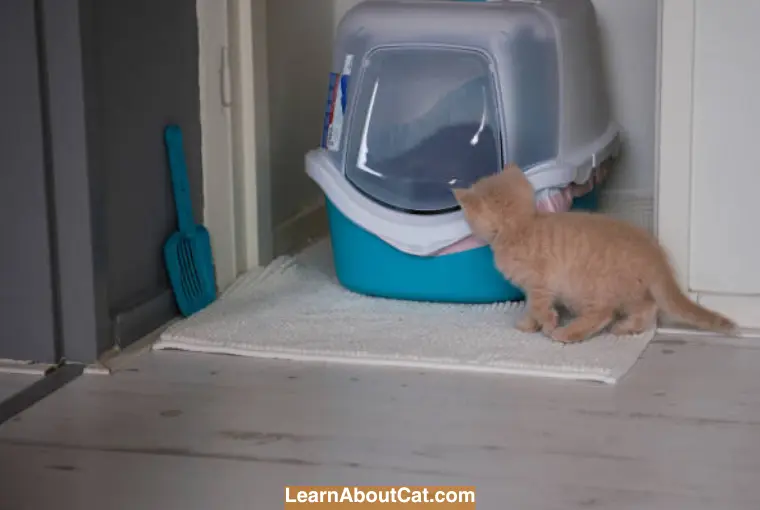
1. Scent Recognition
Cats have an incredible sense of smell, far superior to that of humans. They possess a specialized organ called the Jacobson’s organ, or the vomeronasal organ, located on the roof of their mouth. This organ allows cats to detect pheromones and other chemical cues in their environment, making scent recognition a vital aspect of their communication and navigation.
When a cat uses the litter box, it leaves behind a distinct scent associated with its elimination. The cat’s sensitive olfactory system allows it to recognize this scent and associate it with the litter box. Over time, the cat becomes accustomed to the smell of its litter box, reinforcing its understanding of where to go when it needs to relieve itself.
2. Observation and Memory
Cats are astute observers of their surroundings. When a litter box is introduced into its environment, they keenly observe its location and features. Cats have excellent spatial memory, which means they can remember the location of objects in their territory.
Once a cat uses the litter box, it mentally records the location of the box. This memory serves as a reference point for future visits. As long as the litter box remains in the same spot, the cat will effortlessly find it whenever the need arises.
3. Sensory Cues
Cats heavily rely on their senses to interpret the world around them, and this extends to their litter box habits. Besides their keen sense of smell, cats utilize other sensory cues to identify their litter box:
- Visual Cues: Cats can recognize the shape and appearance of their litter box. Placing the litter box in a consistent spot allows them to visually associate the box with its designated location.
- Texture and Feel: The texture of the litter inside the box also plays a role in a cat’s recognition. Cats develop a preference for a specific litter type, and the feel of the litter beneath their paws further reinforces their litter box association.
- Sound: The sound of their paws scraping the litter can also serve as an auditory cue for cats to identify their litter box.
- Consistency in Cleaning: Cats prefer clean and well-maintained litter boxes. Regular cleaning and maintaining a fresh litter bed help to reinforce the connection between the cat and its litter box.
4. Human Assistance in Litter Training
- Setting Up the Litter Box: To aid in litter training, cat owners should carefully select a suitable litter box. Consider factors such as size, depth, and ease of access to make the litter box appealing to the cat.
- Encouraging Exploration: During the initial stages, encourage the cat to explore the litter box by placing it in a quiet and private location. Avoid sudden changes in its position to prevent confusion.
- Positive Reinforcement: Rewarding the cat with treats or gentle praise each time they use the litter box helps reinforce the behavior positively.
5. Consistency and Routine
Cats thrive on consistency and routine. Once they are introduced to a designated area for elimination, they prefer to use the same spot repeatedly. As part of their natural behavior, cats seek out familiar and safe locations for their essential activities, including urination and defecation.
To ensure that cats know where the litter box is, it is essential to maintain a consistent routine. Placing the litter box in a quiet and accessible location, away from high-traffic areas, provides a sense of security for the cat. Additionally, keeping the litter box clean and free from strong odors encourages regular use.
6. Mother Cat’s Influence
The mother cat plays a critical role in teaching her kittens’ essential life skills, and this includes litter box training. In the early stages of a kitten’s life, the mother guides them to eliminate waste by licking their genital area to stimulate urination and defecation. This action not only helps keep the nest clean but also teaches the kittens about the proper elimination process.
As the kittens grow, they observe their mother using the litter box herself. This observation is a form of learning through imitation. By witnessing their mother’s behavior, the kittens learn that the litter box is a safe and acceptable spot for elimination. This influence from their mother lays the foundation for their litter box habits as they transition into adulthood.
Check Out: Why Does My Cat Keep Moving Her Kittens?
7. Spatial Awareness
Cats have an innate sense of spatial awareness, allowing them to navigate their environment with precision. They are skilled at remembering locations and paths, making it easier for them to find familiar places, such as their litter box.
Once a cat becomes accustomed to the location of its litter box, it relies on its spatial memory to return to the spot whenever it needs to relieve itself. Even in multi-story homes, cats can confidently locate their litter box, showcasing their remarkable spatial awareness.
8. Following the Lead of Other Cats
Cats are highly social animals, and they are observant of the behaviors of other cats around them. In multi-cat households or communities, kittens often learn by observing older cats using the litter box. This social learning helps the kittens understand that the litter box is a communal elimination area and reinforces their inclination to follow suit.
Even in single-cat households, a cat might observe humans or other pets using the litter box, leading to a similar behavioral response. Following the lead of other cats or companions contributes to a cat’s understanding of where the litter box is and how to use it.
9. Litter Texture and Box Type
The texture of the litter and the type of litter box used can also influence a cat’s recognition of its elimination spot. Cats have preferences when it comes to litter texture, and they may have a strong inclination toward a particular type of litter. For example, some cats prefer finer-textured litter, while others prefer coarser options.
Additionally, the type of litter box itself can make a difference. Some cats prefer covered litter boxes for added privacy, while others feel more comfortable in open ones. Providing a litter box that aligns with a cat’s preferences can aid in the cat’s recognition of the designated elimination area.
Do Cats Get Upset If You Move Their Litter Box?
Yes, cats can get upset if you move their litter box. Cats are creatures of habit and highly territorial. They rely on familiar scents and locations to feel secure and comfortable. When you move their litter box to a new spot, it disrupts their established territory, and they might become anxious or stressed.
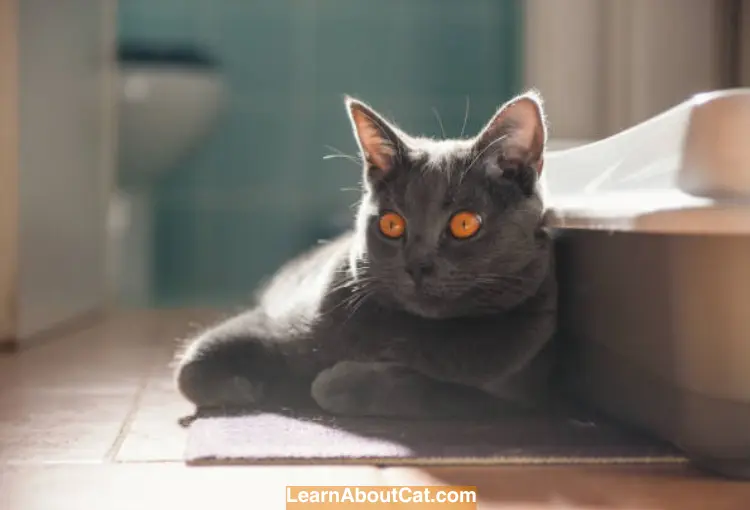
To minimize their distress, it’s essential to approach the relocation carefully and make the transition as smooth as possible. Gradually moving the litter box and maintaining familiar scents can help your cat adjust to the change more easily.
Frequently Asked Questions
My cat is not using the litter box anymore. What should I do?
If your cat suddenly abstains from using the litter box, it could be due to either health-related issues or behavioral concerns. Consult your veterinarian to rule out any medical concerns and consider potential stressors in your cat’s environment. Try to identify and remove any stressors in your cat’s environment. Ensure the litter box is kept clean and in a quiet, accessible location to make it more appealing to your cat.
Can I use scented litter for my cat?
Some cats may be sensitive to strong scents, so it’s best to avoid scented litter unless your cat shows a preference for it. Unscented litter is generally safer and less likely to cause any discomfort.
My cat is going outside the litter box. What could be the reason?
Cats might deviate from using the litter box due to medical conditions like urinary tract infections or behavioral issues such as stress or anxiety. Scheduling a thorough veterinary check-up and conducting an evaluation of your cat’s environment can shed light on and address the underlying cause.
How can I encourage my cat to use the litter box consistently?
Employing positive reinforcement techniques, like treats and praise, can be highly effective in encouraging your feline friend to consistently use the litter box. Keeping the box clean and positioning it in a peaceful, easily accessible area can enhance its lure to your cat.
Should I use clumping or non-clumping litter for my cat?
Both clumping and non-clumping litters are viable options, but some cats may express a preference for one over the other. Experimenting with both types will help you ascertain which one your cat favors and feels most comfortable using.
Conclusion
The ability of cats to find their litter box is a fascinating blend of their exceptional senses, observational skills, and innate instincts. Their keen sense of smell and sharp memory guide them to the familiar scent of the litter box, while social learning and imitation play a role in their litter box know-how. Coupled with their natural desire for cleanliness and territory marking, cats confidently navigate their environment to locate their designated spot for elimination.
As cat owners, understanding these remarkable traits allows us to create an optimal environment for our feline companions, ensuring their comfort and well-being. Providing a clean and accessible litter box, along with affectionate encouragement, reinforces positive litter habits for a harmonious coexistence with our purring friends.
Who is Isabella?
My name is Isabella, and I am a dedicated and knowledgeable cat enthusiast. With years of experience caring for cats and a deep love for felines, I made a mission to help other cat lovers navigate the challenges of cat ownership.


